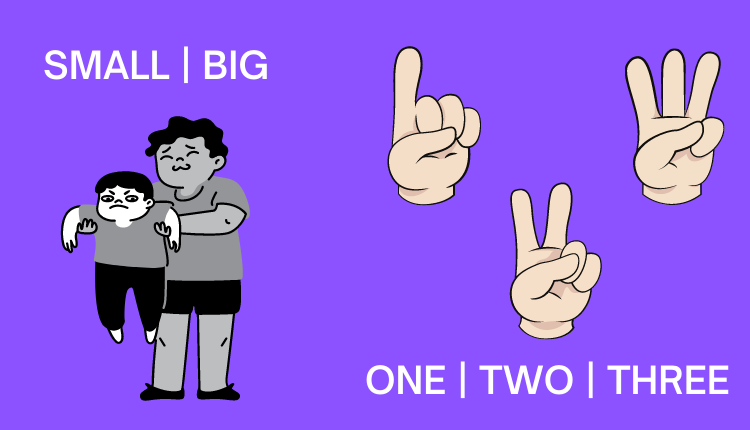The words “number” and “amount” are used to explain how many or how much of something is there. A research report might include information on the number of contributors in the study, the number of surveys that were completed, the amount of time assigned for a test, or the amount of money spent.
What is the difference between these two words? The answer lies in the English distinction between count and noncount nouns. Though number and amount have similar meanings, number is used for things that are countable, while amount is used for things that are uncountable. Knowing when to use either is a matter of looking at the noun that’s being described.
Count Nouns: Number
Count nouns refer to countable things, such as a novel, tiger, or museum. These words have both a singular and a plural form, e.g., “novel” and “novels.”
“Number” is used with count nouns; for instance, you can count the number of novels in on a bookshelf, talk about the number of tigers in a sanctuary, and discuss the number of museums in a state.
Noncount Nouns: Amount
Noncount nouns, also known as mass or uncountable nouns, represent things that are not easily quantified, such as wine or wood. These things exist as a sort of “mass” that is not easily counted or separated into definite, individual entities. Some noncount nouns can, in fact, be counted, such as hair or rice. That is, a tenacious person could endeavor to count the strands of hair on a person’s head or the grains of rice in a bag. But, the task would be tiresome. Therefore, “hair” and “rice” are considered noncount nouns.
Noncount nouns do not have a plural form. For instance, it would be strange to say “one air, two airs.”. In some contexts, the plural form can be used, for example, when the word actually means “type of,” “canister of,” or “jar of” with the liquids, or when used in figurative language such as idioms, e.g., put on airs.
“Amount” is used to describe the quantity of noncount nouns. For instance, you can measure the amount of water in a bucket or the amount of air in a canister. Likewise, you can estimate the amount of dog hair that is visible on a carpet or the amount of salt a patient has consumed lately.
An exception to these rules appears with the word “data,” which is conventionally the plural form of “datum.” Despite the singular-plural distinction, the phrase “amount of data” is fairly common.
With this understanding of how to use “number” and “amount” correctly, go ahead and write that research article or case report with confidence.
Besides, if you are looking for an AI-driven writing tool to detect the ungrammatical use of “amount” and “number” why not use Trinka—the world’s first language enhancement tool that is custom-built for academic and technical writing. It has several exclusive features to make your manuscript ready for the global audience.

